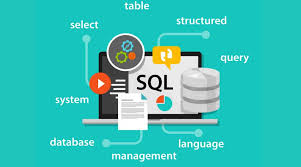Description
Introduction to SQL Development Training
Welcome to the SQL Development Training course! In today’s data-driven world, SQL (Structured Query Language) is an essential skill for anyone involved in data management and analysis. This course is designed to equip you with the foundational knowledge and practical skills needed to effectively interact with relational databases. Whether you’re a beginner looking to kickstart your career in data or a professional aiming to enhance your database management skills, this training will provide you with the tools and techniques to query, manipulate, and manage data efficiently.
Throughout this course, you will learn how to write SQL queries, understand database design principles, and utilize advanced SQL features to solve real-world problems. By the end of the training, you’ll be confident in your ability to extract valuable insights from data and contribute effectively to data-driven projects.
Prerequisites
To ensure a smooth learning experience, we recommend the following prerequisites:
- Basic Computer Skills: Familiarity with computer operations and navigation is essential.
- Understanding of Database Concepts: A general understanding of databases and how they function will be beneficial.
- No Programming Experience Required: While prior programming knowledge is not mandatory, it may help you grasp concepts more easily.
TABLE OF CONTENT
1.Introduction to SQL
1.1 What is SQL?
1.2 Importance of SQL in Software Development
1.3 Types of SQL Databases
2.Setting Up the Environment
2.1 Installing a Database Management System (DBMS)
2.2 Connecting to a Database (Ref: Database)
2.3 Popular DBMS (e.g., MySQL, PostgreSQL, SQL Server)
3.Basic SQL Commands
3.1 SELECT Statement
3.2 INSERT Statement
3.3 UPDATE Statement
3.4 DELETE Statement
4.SQL Constraints
4.1 Primary Key
4.2 Foreign Key
4.3 Unique Constraint
4.4 CHECK Constraint
4.5 Default Constraint
5.Querying Data
5.1 Filtering Data (WHERE clause)
5.2 Sorting Data (ORDER BY clause)
5.3 Grouping Data (GROUP BY clause)
5.4 Aggregating Data (SUM, AVG, COUNT, MAX, MIN)
6.Joins
6.1 INNER JOIN
6.2 LEFT JOIN
6.3 RIGHT JOIN
6.4 FULL OUTER JOIN
7.Subqueries
7.1 Single Row Subquery
7.2 Multiple Row Subquery
7.3 Correlated Subquery
8.Indexes and Optimization
8.1 Importance of Indexes
8.2 Creating Indexes
8.3 Query Optimization Techniques
9.Transactions and Concurrency
9.1 ACID Properties
9.2 COMMIT and ROLLBACK Statements
9.3 Isolation Levels
10.Stored Procedures and Functions
10.1 Creating Stored Procedures
10.2 Creating Functions
10.3 Triggers
11.Advanced Topics
11.1 Views
11.2 User-defined Data Types
11.3 Dynamic SQL
11.4 Common Table Expressions (CTEs)
12.Security in SQL
12.1 User Permissions
12.2 Roles and Privileges
12.3 SQL Injection Prevention
13.Database Design Best Practices
13.1 Normalization
13.2 Denormalization
13.3 ER Diagrams
14.Version Control for Database
14.1 Managing Database Changes
14.2 Version Control Systems (e.g., Git for Databases)
15.Connecting SQL with Programming Languages
15.1 SQL in Python
15.2 SQL in Java
15.3 SQL in .NET







Reviews
There are no reviews yet.